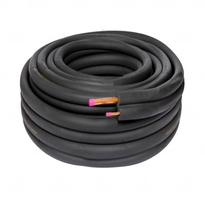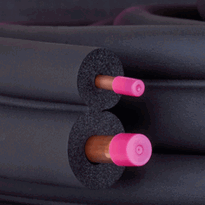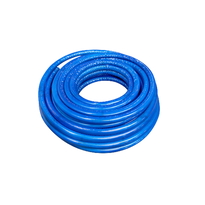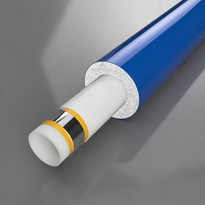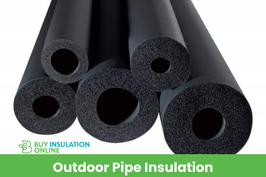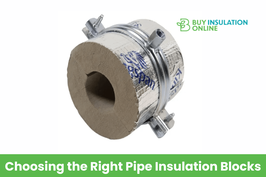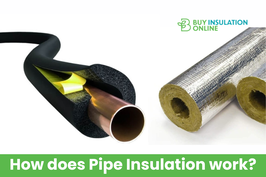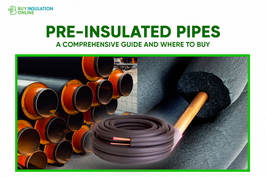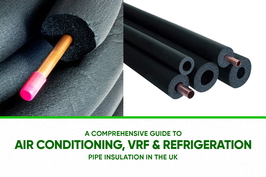Pre Insulated Ac Pipe
Pre-insulated air conditioning pipes are composed of a central pipe crafted from materials such as steel, copper, or plastics, encased by a high-quality insulation layer like polyurethane foam. This assembly is safeguarded by a robust outer casing, commonly made from galvanized steel or polyethylene. Such pipes effectively minimize heat transfer, enhance energy efficiency, and facilitate easier installation by integrating piping and insulation within a single system. They are ideally suited for both HVAC and industrial applications, offering long-term durability and reduced maintenance requirements.
When considering the installation of pre-insulated pipes, it is essential to observe safety precautions and correct handling procedures to ensure optimal performance and longevity. Proper installation practices also include ensuring airtight connections and appropriate support to prevent undue stress on the pipes. Furthermore, selection of suitable materials and adherence to manufacturer guidelines will contribute to the system's efficiency and safety over its service life.
Key Components and Materials of Pre-Insulated AC Pipes
Pre-insulated air conditioning (AC) pipes consist of several essential components and materials that work together to deliver efficient thermal performance and durability.
The inner pipe is commonly fabricated from materials such as steel, copper, or plastics like polypropylene or polyethylene. These materials are selected based on specific requirements, including strength, thermal conductivity, and corrosion resistance. The goal is to ensure long-lasting performance under operational conditions. Additionally, the choice of materials can influence the ease of installation and maintenance over time.
Surrounding the inner pipe is the insulation layer, typically made from polyurethane-based foam. This insulation provides rigid or flexible thermal isolation with a closed-cell structure that prevents moisture ingress. By doing so, it maintains optimal thermal efficiency. This insulation also helps to reduce heat loss and energy consumption. It is often designed to be resistant to moisture, chemicals, and temperature fluctuations, ensuring consistent performance in different environments.
The outer casing, which protects the insulation and inner pipe, is generally constructed from materials such as galvanized steel, stainless steel, high-density polyethylene (HDPE), or aluminum. This outer layer offers mechanical protection and resistance to environmental elements. It helps to preserve the integrity of the entire system. Moreover, the outer casing can also serve as a barrier against external impacts and weathering.
All these components are factory-assembled into a unified unit. This process ensures high quality control and reduces installation time. The integrated design results in a robust system capable of withstanding operational stresses and environmental challenges. Such durability makes it suitable for the demanding conditions of UK weather and infrastructure. Proper assembly and material selection are crucial to meet airtightness and insulation standards that help improve overall performance.
Advantages and Applications in HVAC and Industrial Systems
Have you thought about how the distinctive features of pre-insulated air conditioning (AC) pipes enhance their widespread application in both HVAC and industrial systems? These pipes offer substantial improvements in energy efficiency by reducing heat loss or gain during the transport of refrigerants, which helps to maintain fluid temperatures within the system and can realize energy savings of up to 20 percent.
Their high-grade factory insulation prevents thermal bridging and decreases operational costs while also supporting environmental sustainability through lower greenhouse gas emissions. Additionally, their factory-insulated design ensures consistent quality control and reduces onsite installation errors, contributing further to efficiency and reliability.
Installation is made simpler because these pipes combine piping and insulation into a single, integrated component. This allows for quicker, safer, and more adaptable setups—especially beneficial in complex or confined spaces.
Furthermore, their durability, resistance to corrosion, and minimal maintenance needs—often spanning up to 25 years—make pre-insulated pipes a dependable choice for large-scale cooling plants, multi-unit buildings, and retrofit projects that prioritise long-term operational efficiency.
Standards, Safety, and Durability Considerations
Ensuring that pre-insulated AC pipes adhere to appropriate standards, safety protocols, and durability requirements is essential for their reliable performance across a variety of applications.
The materials used, such as polyurethane foam insulation, must comply with relevant standards like ASTM C-591, which guarantees their performance and safety.
Insulation thickness in these pipes typically ranges from 25 to 40 millimeters, depending on the pipe size. The insulation density generally falls within 32 to 48 kilograms per cubic meter, with at least 90% closed cell content to sustain insulation effectiveness over time.
Protective jackets—commonly made from PVC or corrugated polyethylene—serve to shield the pipes from mechanical damage and environmental elements, ensuring longevity and reliability.
These pipes are designed to operate effectively within a broad temperature range, from -80°C to +140°C, allowing their use across diverse environments in the UK.
Polyurethane foam insulation must be manufactured under strict quality controls to meet both safety and durability standards, ensuring long-term performance.
Such measures collectively ensure the structural integrity, safety, and long-term durability of the piping systems, meeting the rigorous standards required for safe and efficient operation.
Installation Procedures and Maintenance Tips
Proper installation of pre-insulated AC pipes requires careful preparation, precise execution, and thorough inspection at each stage to ensure system integrity and optimal performance.
Initially, selecting the correct pipe involves choosing insulation thickness and materials suited to the specific system requirements. Followed by trench preparation that includes digging with a bottom layer of compacted sand to support the pipes.
During installation, pipes should be laid on timber pads or sand beds to maintain levelness and prevent damage, with welds performed in accordance with safety standards and tested for leaks.
It is essential to incorporate expansion joints to accommodate thermal movement. All components, including alarm systems, require visual inspection and correct connection to ensure proper functionality.
Regular maintenance involves inspecting the system periodically for leaks or damage, replacing insulation if it becomes compromised, and conducting routine tests to preserve optimal operation. Additionally, ensuring proper thermal bridging management can further improve system efficiency and durability.
Conclusion
Pre-insulated AC pipes are essential components for ensuring efficient and reliable thermal transfer within HVAC and industrial systems. They consist of durable materials designed to withstand the demands of the environment, and their manufacturing adheres to strict safety and quality standards. Standardized installation procedures further contribute to optimal system performance and longevity.
Proper maintenance and strict adherence to installation guidelines are crucial for minimizing potential issues, thereby extending the overall lifespan of the system. A comprehensive understanding of their components, advantages, and correct handling practices enables informed decision-making, which promotes energy efficiency, reduces operational costs, and ensures dependable cooling or heating solutions.
Knowledge of these pipes not only enhances system effectiveness but also reinforces safety measures. In the UK context, recognizing the importance of high-quality pre-insulated pipes supports the development of sustainable and cost-effective HVAC and industrial infrastructure.
